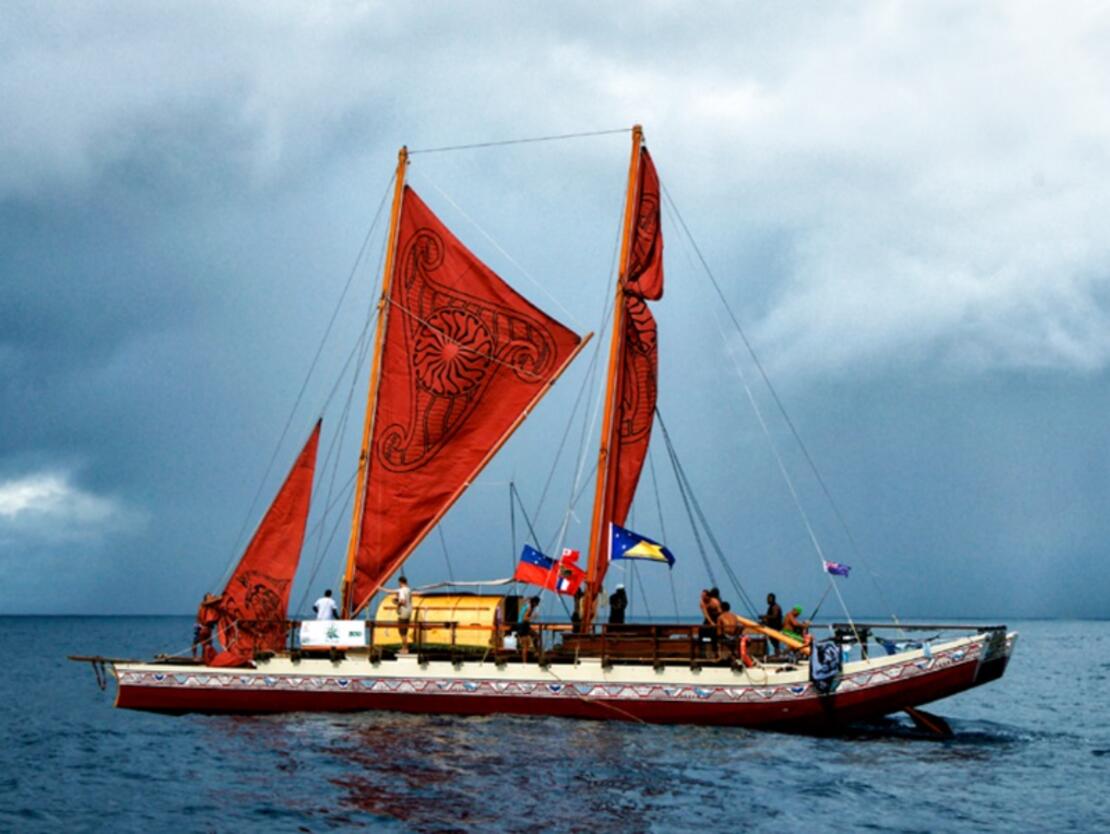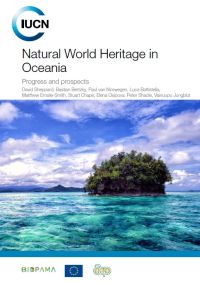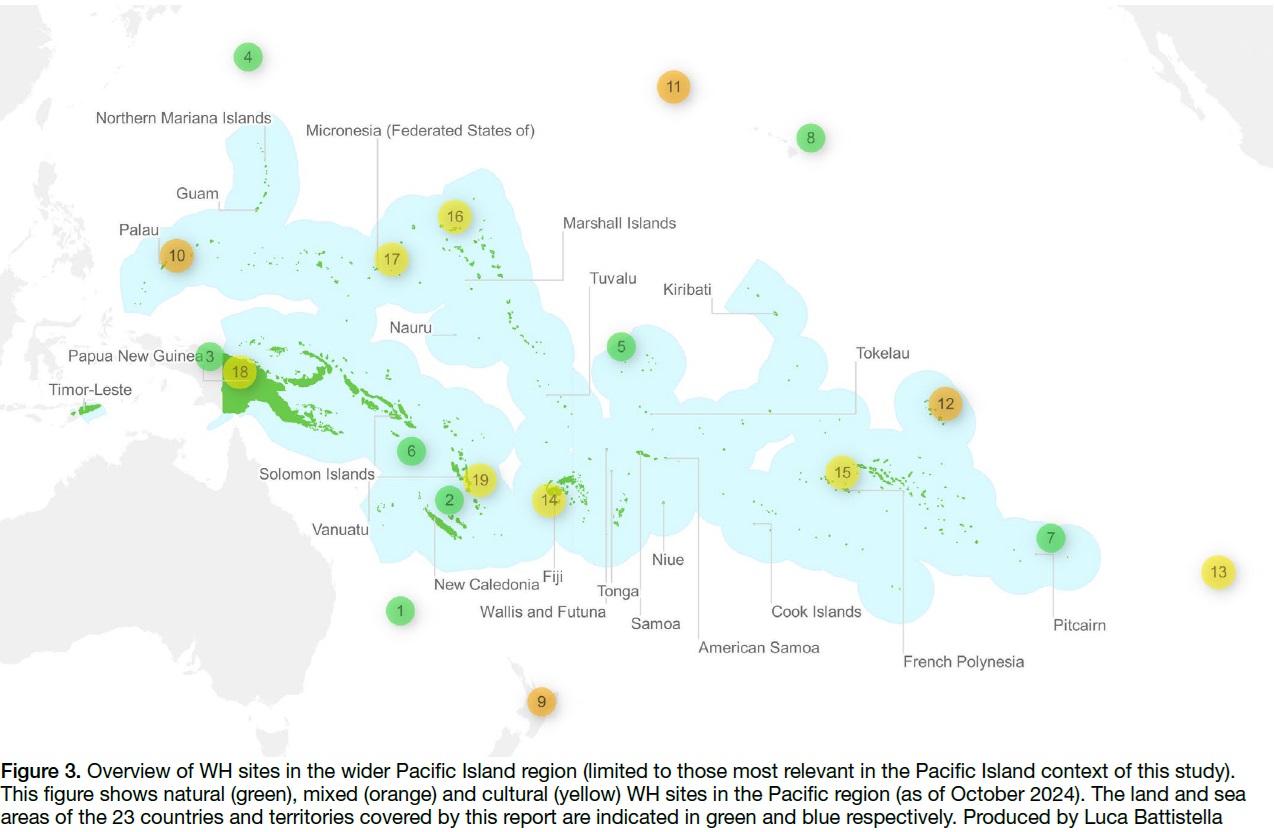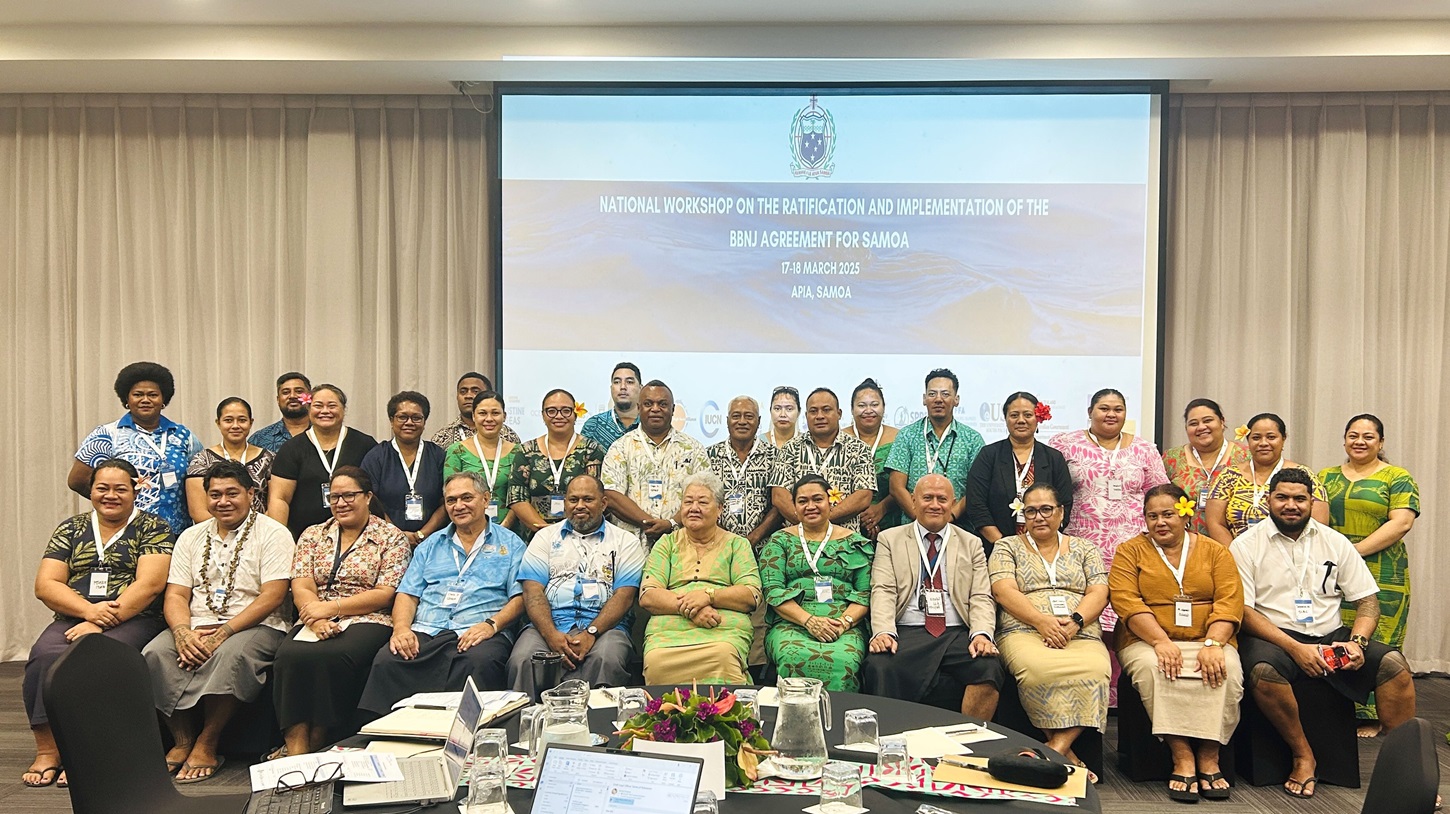New IUCN report identifies challenges and opportunities for Natural World Heritage in Oceania ahead of UNOC3
The Pacific region has witnessed some of humanity's greatest achievements. It is a vibrant tapestry of diverse cultures and languages and holds immense global significance for its biodiversity and geodiversity. Despite this, it remains very poorly represented on the UNESCO World Heritage List. Ahead of the 3rd UN Ocean Conference, IUCN launches a new report which advocates for a substantial increase in resources to ensure that the heritage of Pacific Islanders is internationally recognized and fosters greater prosperity.

A traditional Polynesia voyaging canoe at sea, Samoa
Out of a total of over 1200 World Heritage sites, there are only 6 natural and mixed sites within the 23 Pacific Island Countries and Territories, including the largest lake in the insular Pacific, an oceanic wilderness, and a maze of green dome-shaped Islands seemingly floating in a turquoise lagoon. To address this poor representation on the World Heritage List, the new IUCN report has identified marine and terrestrial areas which potentially could meet the natural World Heritage criteria, and makes 11 recommendations.

=> Download now <=
The Pacific region is home to unique and varied ecosystems, and a wide range of biographical and geomorphological features. The region is characterized by high levels of biodiversity and species endemism largely driven by the geographical isolation of many islands, and is also extremely vulnerable to impacts such as climate change, habitat loss and invasive species. The deep connection between people, nature and culture also makes the Pacific islands the pioneers of community-based approaches to protection of marine resources. There is therefore a clear potential for greater representation of sites from the region under the World Heritage Convention.
Lack of funding for all aspects of World Heritage is by far the largest constraint. Existing sites are generally managed by poorly resourced environment agencies, further complicated by the remote and isolated nature of many Pacific Island World Heritage sites. The costs for preparing a World Heritage nomination document often go well beyond available resources. Costs involve the preparation of a high quality, scientifically credible information as well the need for many consultations (as often required by customary practices) including with communities which can be very remote from national capitals.
There is also a need for enhanced capacity building and sharing of knowledge, including on innovative models of financing developed in the Pacific.
More support from international partners and UNESCO is urgently required, and IUCN is committed to play its part. The report also notes requests from Governments, including Papua New Guinea, of how GEF funding could help upgrade protected area systems, World Heritage recognition and cover subsequent management costs.
The report also highlights the need for better linkages between natural and cultural World Heritage in the Pacific region. Nature and culture are inextricably linked in the Pacific, with the majority of land and in-shore water resources under customary ownership by local communities. Some cultural World Heritage sites in the region have important natural values, and many natural sites have high cultural significance.
This report was made possible through BIOPAMA, an initiative of the Organisation of African, Caribbean and Pacific States (OACPS) financed by the European Union’s 11th European Development Fund. IUCN also acknowledges the report’s authors, the European Commission’s Joint Research Centre, SPREP, UNESCO, and the many contributors.
About IUCN’s work on World Heritage in the Pacific
IUCN is the official Advisory Body for nature under the World Heritage Convention. IUCN also actively supports work on heritage conservation throughout the region. For example, the IUCN Oceania Regional Office implements conservation grants in the Phoenix Islands Protected Area (PIPA, Kiribati) and East Rennell (Solomon Islands) World Heritage sites. IUCN Members have equally played an important direct role in supporting Governments and local communities in heritage conservation. For example, Conservation International helped establish the PIPA Trust Fund, BirdLife International supported rat eradication programmes in East Rennell, or the Nature Conservancy helped develop the management plan for the Rock Islands Southern Lagoon.
Support IUCN’s work on World Heritage in the Pacific
IUCN acknowledges funding from UNESCO to cover an important part of IUCN’s advisory work for evaluations and monitoring. Yet World Heritage is facing a funding crisis. With your support IUCN can help more countries map sites that could benefit from World Heritage protection, enable more Pacific site managers to be trained, and accelerate species conservation action or improve tourism management. Reach out to explore partnerships, learn how you can support our World Heritage work, or GIVE NOW.

The numbered World Heritage sites shown in the broader Pacific region are outlined below. Sites within the 23 PICTs covered by this report are indicated with an asterix (*).
Natural Sites:
(1) Lord Howe Island Group (Australia)
(2) (*) Lagoons of New Caledonia: Reef Diversity and Associated Ecosystems (France/New Caledonia)
(3) Lorentz National Park (Indonesia)
(4) Ogasawara Islands (Japan)
(5) (*) Phoenix Islands Protected Area (Kiribati)
(6) (*) East Rennell (Solomon Islands)
(7) Henderson Island (UK)
(8) Hawaii Volcanoes National Park National Park (USA)
Mixed World Heritage sites and cultural landscapes
(9) Tongariro National Park (New Zealand)
(10) (*) Rock Islands Southern Lagoon (Palau)
(11) Papahānaumokuākea (USA)
(12) (*) Te Henua Enata – The Marquesas Islands (France/French Polynesia)
Cultural World Heritage sites
(13) Rapa Nui National Park (Chile)
(14) (*) Levuka Historical Port Town (Fiji)
(15) (*) Taputapuātea (France/French Polynesia)
(16) (*) Bikini Atoll Nuclear Test Site (Marshall Islands)
(17) (*) Nan Madol: Ceremonial Centre of Eastern Micronesia (Federated States of Micronesia)
(18) (*) Kuk Early Agricultural Site (Papua New Guinea)
(19) (*) Chief Roi Mata’s Domain (Vanuatu)

